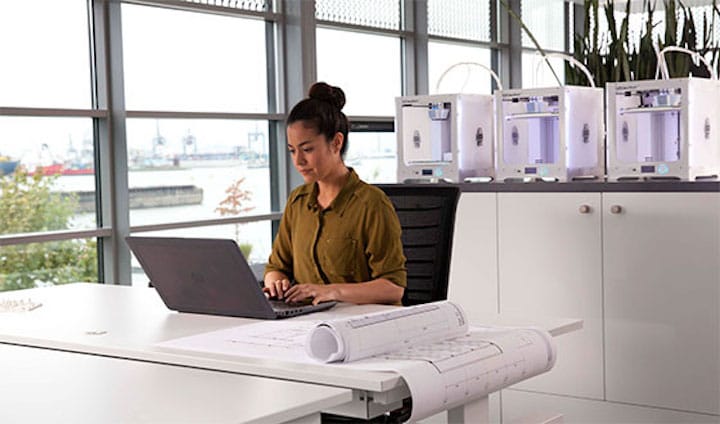Ultimaker has released their powerful Cura Connect system.
For years Cura, the mainstay slicing and 3D printer management software associated with Ultimaker equipment (and many others, come to think of it), but in all that time it’s been a single-machine, standalone program. Now that’s changing, and changing a lot.
It’s really more than just software, as it works in combination with the latest firmware found on their current Ultimaker 3 equipment. The Ultimaker 3’s now act as “nodes” in a virtual 3D print cluster, and Cura Connect is how they are coordinated.
This is a really interesting development, because it could significantly affect the future of Ultimaker.
But how does it work? It seems that the Ultimaker 3’s networking abilities enable them to “find each other” and establish a cluster of machines, all by themselves. One specific machine acts as a “host” and the other machines are connected once someone manually confirms their addition to the cluster from their front panels.
The cluster itself maintains knowledge of its current status, including whether a printer is available, busy and what its current materials configuration might be.
At that point, the virtual cluster exists and can be accessed from Cura on network connected computers. The functions are basic, yet powerful.
New print jobs can be automatically routed to an available printer that matches the required print configuration. Extra jobs are held in a queue until an appropriately configured machine becomes available. Print operations can be monitored remotely through Cura, as it connects to the live camera feed available on the Ultimaker 3 equipment.
It all makes sense and vastly simplifies the work of organizing a cluster of 3D printers. Imagine for a moment, what life would be like for a 3D printer operator in, say, a university, where there are 100 machines running. Dispatching the work would be a tremendous amount of work, running to and fro with countless SD cards. Do you have the right one with you?
I suspect this problem may actually prevent some installations from setting up larger 3D print clusters, and that’s what Ultimaker is solving here.
Ultimaker is not the first party to develop a cluster-style 3D print system. MakerBot’s Innovation Center is perhaps the first example, and there are some others. Even Stratasys has shown off a demonstrator that offers similar capability.
But somehow the Cura Connect solution seems a lot easier to set up, as it seems to do most of the work automatically, and does not require machines to be racked or anything like that. Just make sure they’re on the network.
Here’s why this is so critical for Ultimaker: this capability will vastly simplify their ability to sell huge batches of Ultimakers to institutions. This is a far more efficient method of producing sales than the more-or-less individual sales they’ve done until now. After Cura Connect, they can confidently propose the sale of 100+ machines and legitimately say they can be effectively managed. That statement carries a lot of weight in organizations where budgets may not allow the addition of multiple 3D print operators to look after equipment.
Via Ultimaker


